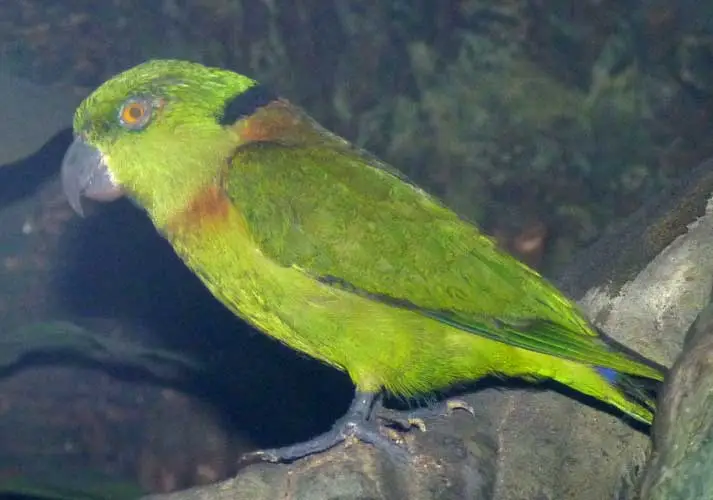
The black-collared lovebird (Agapornis swindernianus), also known as Swindern’s lovebird, is a mostly green parrot native to the dense forests of Equatorial Africa. This elusive bird is one of the least known and least studied lovebird species due to its rarity in both the wild and captivity. In this article, we will delve into the fascinating world of this unique lovebird species, exploring its appearance, behavior, diet, and conservation status.
Taxonomy and Etymology
Taxonomy
The black-collared lovebird is a member of the genus Agapornis, which comprises nine species of small African parrots commonly known as lovebirds. The species is further divided into three subspecies based on slight variations in their plumage and range.
Etymology
This lovebird was first described by Dutch Professor Coenraad Jacob Temminck in 1820, who named it in honor of his friend, Dutch naturalist and physician Jan Swinderen. The name “Swindern’s lovebird” commemorates this connection.
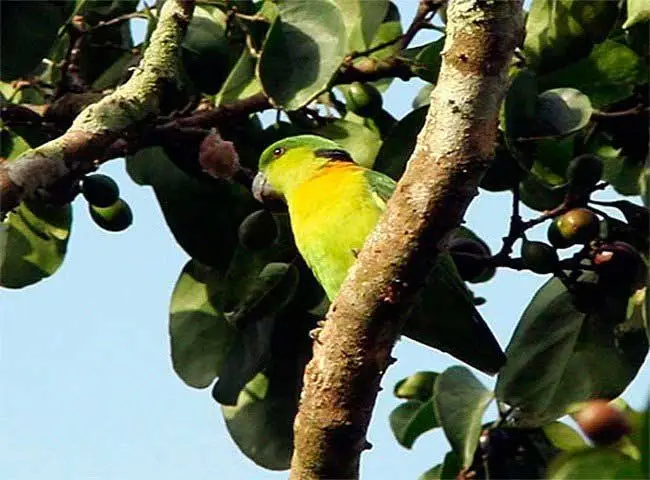
Physical Appearance of the black-collared lovebird
Plumage
The black-collared lovebird’s plumage is predominantly green, making it a mostly green parrot with some unique features that set it apart from other lovebird species. Its most distinctive characteristic is a black collar around its neck, which extends to a black collared nape. The breast is a striking brownish-red chest, while the upper tail coverts display a bright yellow hue. This lovebird also has a dark greyish-black bill, and its grey feet are well-adapted for life in the forest canopy. Color mutations are not common in this species.
Size of the black-collared lovebird
The black-collared lovebird is a small parrot, measuring about 13.5 cm (5 in) long. Despite its small stature, it is a hardy bird that thrives in its native habitat.
Sexual Dimorphism
There is minimal sexual dimorphism between male and female black-collared lovebirds, making it difficult to determine their sex based on appearance alone. However, males generally have a slightly more extensive black band on their necks than females.
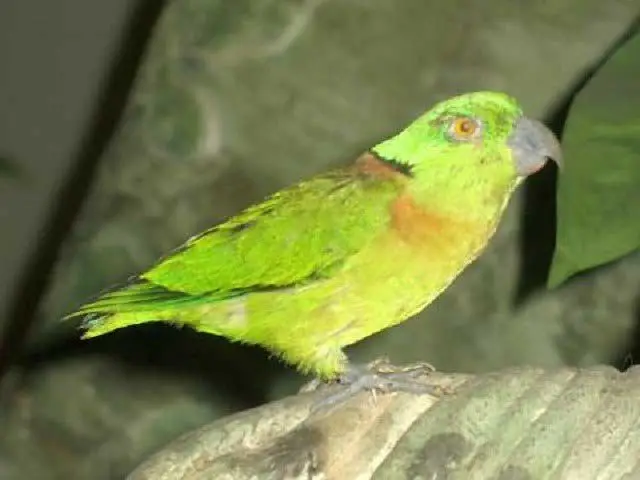
Range and Habitat
Range
The black-collared lovebird has a relatively limited range, primarily inhabiting Equatorial Africa, including countries such as Cameroon, Gabon, Democratic Republic of Congo, Republic of Congo, Uganda, and Liberia.
Habitat of the black-collared lovebird
This lovebird species is found in the dense forest canopy of primary and secondary rainforests. It prefers to hide high in the treetops, making it challenging to observe and study in its natural environment. The black-collared lovebird’s preference for the upper canopy allows it to access its primary food source, native fig seed, which it consumes directly from the fig fruit.
Diet and Foraging Behavior
Dietary Requirement
The daily diet of the black-collared lovebird is primarily composed of native fig seeds. This lovebird species relies heavily on certain native fig seed species, making them a vital component of their diet. They also consume other small seeds, fruits, and occasionally insect larvae, supplementing their base diet to fulfill their vital dietary necessities.
Foraging Behavior
Black-collared lovebirds forage in the forest canopy, where they can access an abundance of native fig fruits. They use their strong, sharp bills to tear open the fig flesh and extract the seeds inside. Their ability to efficiently extract fig seeds while minimizing damage to the fruit is an essential adaptation that enables them to thrive in their habitat.
Breeding and Reproduction
Breeding Season
The breeding season for black-collared lovebirds has not been extensively studied due to their elusive nature. It is believed that their breeding activities coincide with the availability of their primary food source, native figs.
Nests
Like other lovebird species, black-collared lovebirds form monogamous pairs and build their nests in tree cavities. Both male and female birds participate in nest-building, using plant materials such as twigs, leaves, and bark to construct their nests.
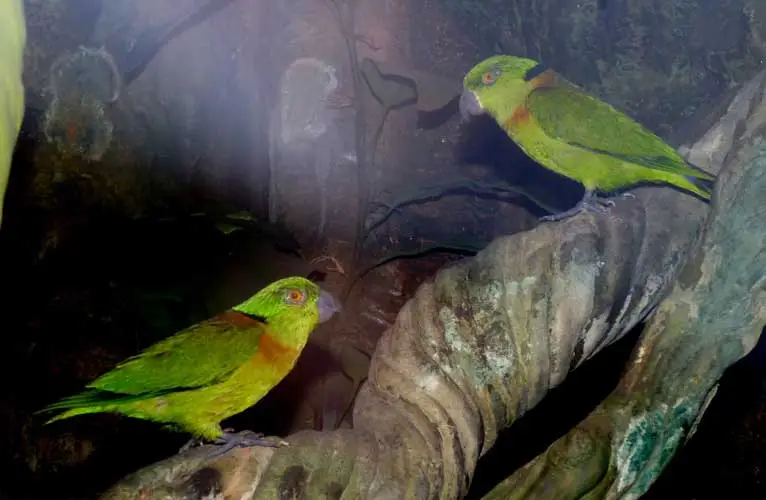
Rarely Kept in Captivity
Reasons for Rarity
Unlike other species such as the black-winged lovebird, the black-collared lovebird is rarely kept in captivity for several reasons. First, their specific dietary requirements can be challenging to replicate in a captive setting. Second, their natural shyness and preference for hiding high in the forest canopy make them less appealing as pets compared to their larger and more colorful cousins. Finally, there is a lack of information about their breeding habits, making it difficult for breeders to successfully breed them in captivity.
Captive Care
If kept in captivity, a black-collared lovebird requires a spacious cage with plenty of perches and hiding spots to replicate tits natural environment. It should also be provided with a diet that closely mimics its natural food sources, including native fig seed and other small seeds, fruits, and occasional insect larvae.
Conservation Status and Threats of the black-collared lovebird
IUCN Red List
The black-collared lovebird is currently listed as Least Concern on the IUCN Red List of Threatened Species. This status reflects the fact that the species has a relatively stable population and does not face any significant threat to its survival. However, this classification could change if new data becomes available that indicates a decline in their numbers.
Threats and Challenges
The primary threat to the black-collared lovebird population is habitat loss due to deforestation and agricultural expansion. Additionally, the species’ reliance on certain native fig seed species makes them vulnerable to fluctuations in food availability. While the black-collared lovebird is not considered a threatened species at this time, continued monitoring and conservation efforts are necessary to ensure their long-term survival.
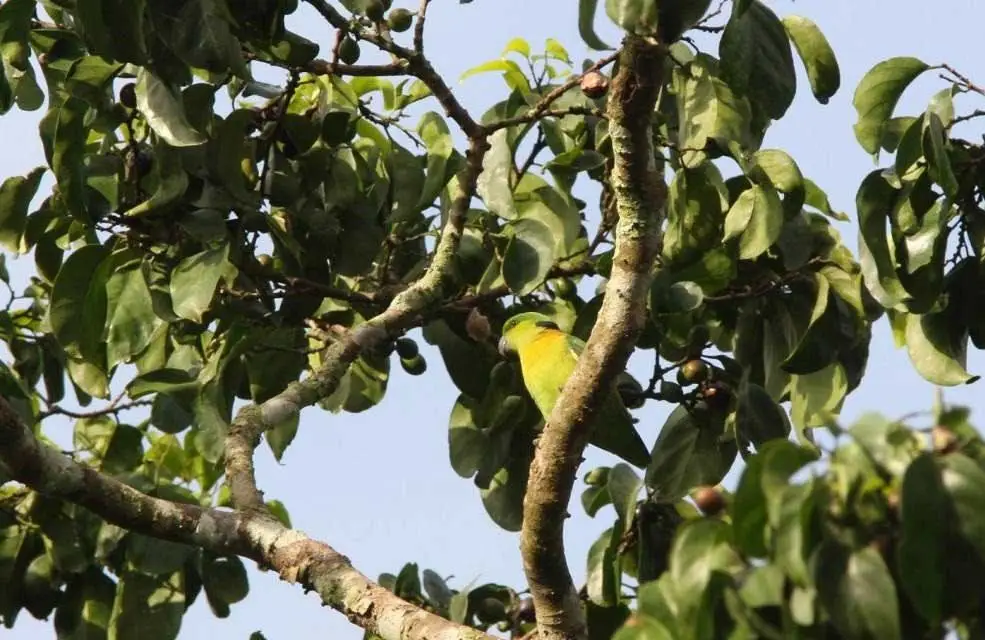
Conclusion
The black-collared lovebird is a fascinating and enigmatic green parrot that remains a mystery to researchers and bird enthusiasts alike. Its unique appearance, elusive nature, and specific dietary requirements make it a rare and captivating species to study and observe. As we continue to learn more about this intriguing bird, it is essential to prioritize conservation efforts and maintain its habitat to ensure the survival and prosperity of the black-collared lovebird for future generations to enjoy.
